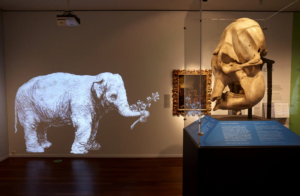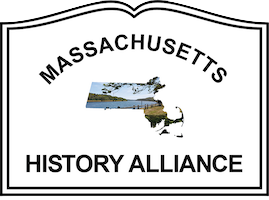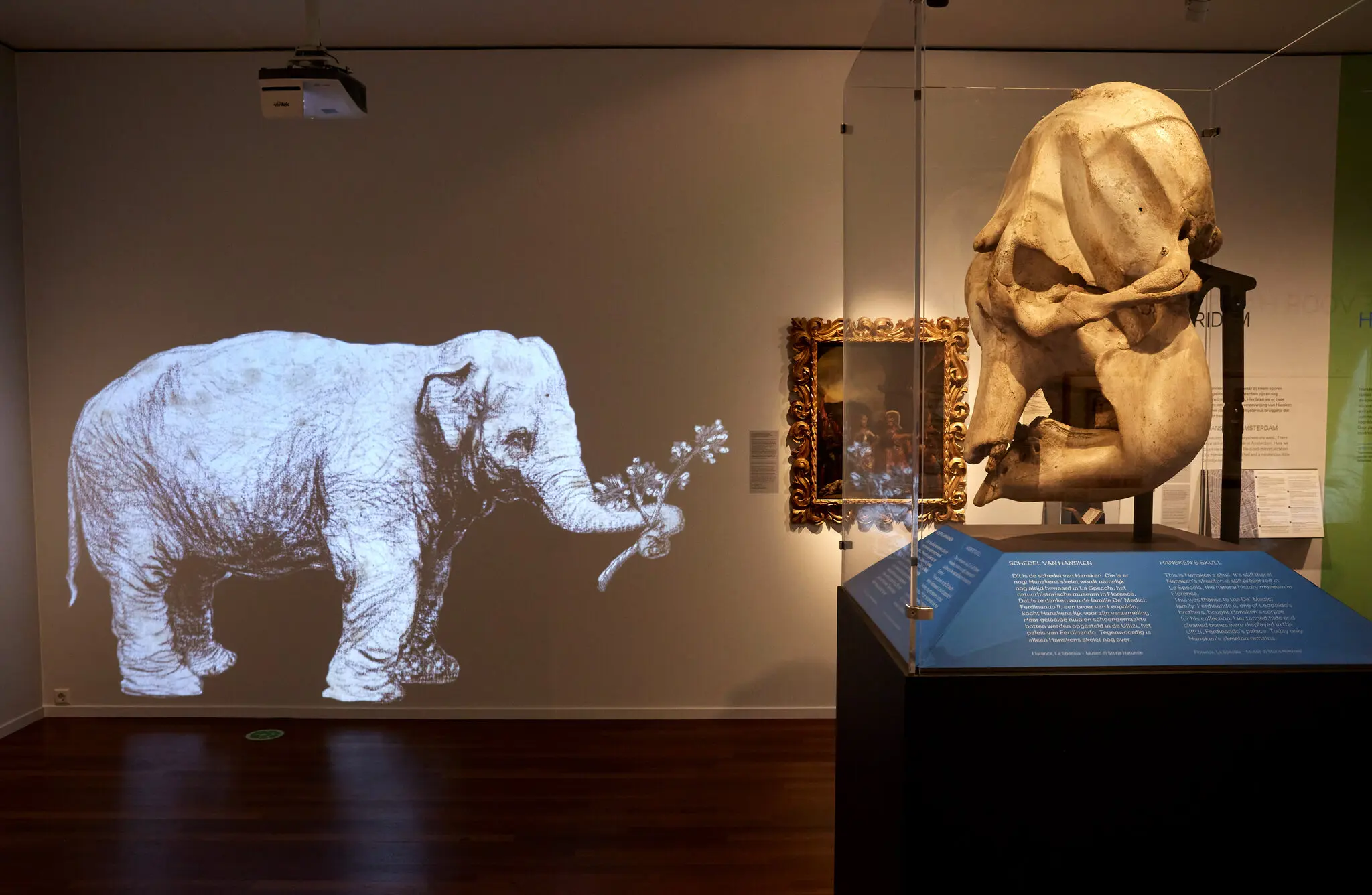The Elephant in Your Instagram Feed

Hansken’s skull and other items on display in the exhibition “Hansken, Rembrandt’s Elephant” at the Rembrandt House.Credit…Photo credit: Julia Gunther for The New York Times
A reckoning with widespread and systemic injustice has characterized the past several years in American public life. Particularly in light of the #MeToo movement and the Movement for Black Lives, Americans have taken opportunities to examine both our workplace cultures and the content and messaging at our sites of cultural and historical transmission. Thanks to social media, examination and reflection have taken the form of a diffuse and democratic dialogue — animated, intimate, often-anonymous voices contributing stories, venting frustration, seeking solidarity, urging change.
In some cases, conversations about workplace practices and cultures have merged with broader discussions about justice and accountability, particularly at historic sites and museums. This process has raised important questions for public historians and has prompted some institutions to begin to build processes and infrastructure for meaningful change. Self-examination sometimes includes taking a “diversity inventory” and acting on results to boost equity and elevate inclusion. This shift comes as labor unions for museum workers are gaining membership and strength. Recently, for example, the Art Institute of Chicago reinvented its docent program to actualize their analysis of diversity needs.
Social media has provided a lens into perceptions of progress. Media feeds have erupted in the form of “truth-telling” spaces. Through hashtag activism, people — particularly young people — have begun to draw attention to concerns and complaints of museum and theater employees nationwide. Instagram has become their primary space to seek redress; it is where many feel they can accuse, vent, warn others and call for accountability for those deemed most responsible for injury.
Posts from various accounts describe toxic and dangerous work conditions endured by museum and theater workers. Some allege that sexual harassment goes unaddressed or is covered up or excused. Other posts expose low pay and insufficient benefits in stark contrast to demands that workers perform tasks far outside of their job descriptions. Organizations in Massachusetts have featured in these narratives.
Confessionals, call-outs and accusations posted on social media demonstrate the emotional weight of anger and trauma. They reach a wide audience; some testimonials attract tens of thousands of reactions. At the same time, they are complicated by a number of factors. There is no way to verify their accuracy. It is difficult to know which accusations merit follow-up and demand accountability and which ones might potentially reflect a certain “greenness” about the realities of work life. In general, the posts do not allow the accused to respond or defend themselves in any meaningful way, despite the fact that accusers often make it very easy to identify the person they are accusing while themselves remaining anonymous.
It is concerning that some employees, interns and volunteers feel that they are left with no other options. They most often indicate they have made some attempt to address the issue through their employer, only for their concern to be swept aside and ignored. Many employees in the sector do not earn enough to hire attorneys and mount effective legal action.
Perhaps it is helpful for us to see these posts as spotlights that reveal a larger truth worthy of our attention. While the threads should be read with a healthy degree of caution and not immediately or always taken at face value, they are worth considering as a window into very legitimate trends, grievances and tensions in the field. Regardless of the medium, the posts raise important questions. Are public history organizations and institutions checking in with employees? Are there transparent and nonhierarchical processes in place to foster equity at work and to address problems? Are employee complaints and feedback taken seriously? Are public history workspaces safe? Why does “intimacy” in small,nonprofit organizations so often overlap with exploitation in the name of “working your way up,” especially when there is so little room at the “top?” Who gets credit in heritage and cultural institutions for good ideas and work done well? Which behaviors are permissible because a board member “doesn’t know better,” or a staff member came of professional age in a “different era?” What excuses are we making and for whom?
Different generations leverage social media differently. Dismissing this trend as meritless will have consequences. In some organizations, conversations or acknowledgments surrounding these issues have taken place but with no meaningful follow through or effective change. Instead of ignoring the “elephant in the room” or in this case the Instagram feed, we can ask ourselves meaningful questions about the profession. How can we create inclusive healing spaces for public historians? Are there measurable consequences for those who prove to be the subjects of these posts? Is it worth attempting to validate information gathered from these Instagram feeds and in some cases seek redress? What are the power differentials that foster and enable toxic climates?
Whatever position is taken, we can’t ignore how all of this reflects American society at large: the generation gaps, the labor issues, the racism and the misogyny. Public historians must confront these questions and so should our employers and leaders. Public history organizations can and should prioritize equity, diversity and representation both inside and out. Efforts like these need resources and clear cut goals and the consideration of response to feedback. It seems obvious, but it perhaps needs to be said that progress towards common goals of social justice matter in today’s workspaces. Our internal processes inform and shape how public historians engage audiences, both positively and negatively. The future of work in the field is, in essence, dependent on how we invite and share feedback and how we use it. Given that, the following questions seem important to ask: Who decides when organizations are falling short? How do we identify and invite change? What do we have to give up in our workplace cultures in order to do better?
by Mary Larkin and Margo Shea
This blog post reflects the opinions and views of the authors and does not necessarily reflect the opinions and views of the MHA.
Mary Larkin is an educator in the Westford Public Schools and a Public History graduate student at Salem State University. Margo Shea is an Associate Professor of History at Salem State University and a member of the MHA Communications Committee.

